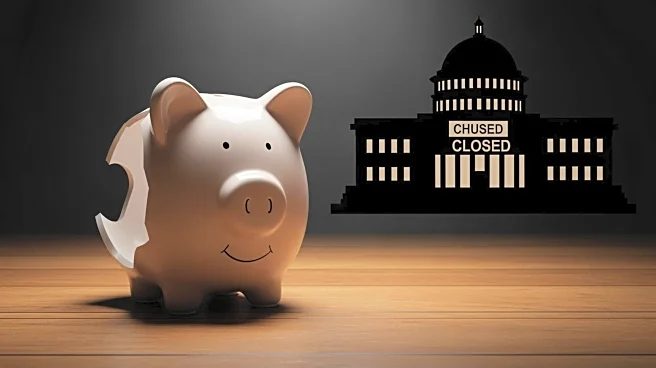What's Happening?
The University of Michigan's latest survey indicates a significant drop in US consumer sentiment, falling to 50.3 on a 100-point index this month. This represents a 6.2% decrease from October and a 29.9% decline year-on-year, nearing its lowest-ever levels.
Concurrently, apparel and footwear prices have risen compared to last year, setting the stage for a challenging holiday shopping season. Despite these challenges, clothing, beauty, and electronics remain top spending categories, with 52% of consumers planning to purchase clothing and 33% intending to buy beauty products. However, consumer anxiety is high, with 47% of Americans stressed about affording the holidays, according to a Credit Karma survey. Experts note that while consumer sentiment is marred by uncertainty, there is still resilience in spending habits, albeit more considered and cautious.
Why It's Important?
The decline in consumer sentiment and rising prices could have significant implications for the US economy, particularly during the holiday season, which is traditionally a peak period for retail sales. The anxiety over financial futures and high prices may lead to more cautious spending, impacting retailers and brands that rely on holiday sales for a substantial portion of their annual revenue. The shift towards more intentional spending suggests that consumers are prioritizing essential and rewarding purchases, which could benefit certain sectors like beauty and fashion. However, brands must navigate these challenges carefully, as steep price hikes could deter spending further, especially with concerns over tariff-induced increases.
What's Next?
As the holiday season approaches, retailers and brands are expected to adjust their marketing strategies to appeal to cautious consumers. This may involve offering competitive pricing, early promotions, and emphasizing value to attract spending. The resilience observed in consumer behavior suggests potential pent-up demand, which could lead to a rebound in spending if economic conditions stabilize. Monitoring consumer sentiment and adapting to changing preferences will be crucial for businesses aiming to capitalize on holiday sales.
Beyond the Headlines
The current economic climate highlights broader issues such as income inequality and the financial vulnerability of average consumers compared to high net worth individuals who continue to drive luxury growth. This disparity may influence long-term consumer behavior, with a potential shift towards more sustainable and value-driven purchasing decisions. Additionally, the impact of tariffs and global economic factors on consumer prices underscores the interconnectedness of international trade and domestic economic health.















